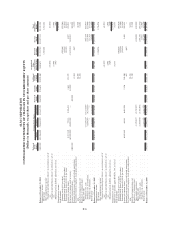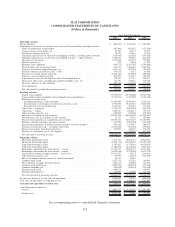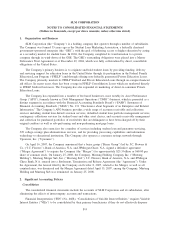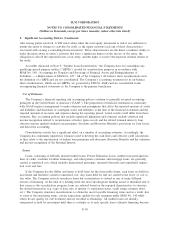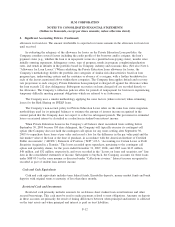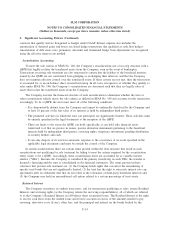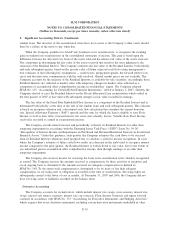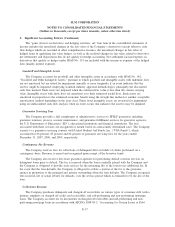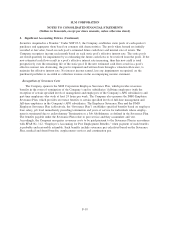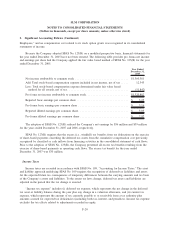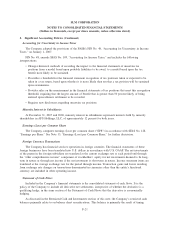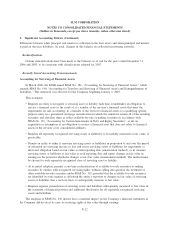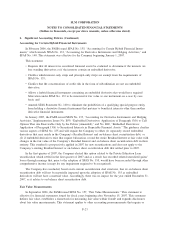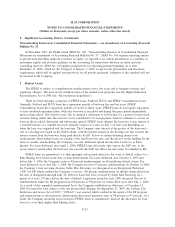Sallie Mae 2007 Annual Report Download - page 136
Download and view the complete annual report
Please find page 136 of the 2007 Sallie Mae annual report below. You can navigate through the pages in the report by either clicking on the pages listed below, or by using the keyword search tool below to find specific information within the annual report.2. Significant Accounting Policies (Continued)
student loans. The investors of the securitization trusts have no recourse to the Company’s other assets should
there be a failure of the trusts to pay when due.
When the Company qualifies for GAAP sale treatment on its securitizations, it recognizes the resulting
gain on student loan securitizations in the consolidated statements of income. This gain is based upon the
difference between the allocated cost basis of the assets sold and the relative fair value of the assets received.
The component in determining the fair value of the assets received that involves the most judgment is the
valuation of the Residual Interest. The Company estimates the fair value of the Residual Interest, both initially
and each subsequent quarter, based on the present value of future expected cash flows using management’s
best estimates of the following key assumptions — credit losses, prepayment speeds, the forward interest rate
curve and discount rates commensurate with the risks involved. Quoted market prices are not available. The
Company accounts for the majority of the Residual Interests as available-for-sale securities. Accordingly, those
Residual Interests are reflected at market value with temporary changes in market value reflected as a
component of accumulated other comprehensive income in stockholders’ equity. The Company adopted
SFAS No. 155, “Accounting for Certain Hybrid Financial Instruments,” effective January 1, 2007, whereby the
Company elected to carry the Residual Interest on the Private Education Loan securitization which settled in
the first quarter of 2007 at fair value with subsequent changes in fair value recorded in earnings.
The fair value of the Fixed Rate Embedded Floor Income is a component of the Residual Interest and is
determined both initially at the time of the sale of the student loans and each subsequent quarter. This estimate
is based on an option valuation and a discounted cash flow calculation that considers the current borrower
rate, Special Allowance Payment (“SAP”) spreads and the term for which the loan is eligible to earn Floor
Income as well as time value, forward interest rate curve and volatility factors. Variable Rate Floor Income
received is recorded as earned in securitization income.
The Company records interest income and periodically evaluates its Residual Interests for other than
temporary impairment in accordance with the Emerging Issues Task Force (“EITF”) Issue No. 99-20
“Recognition of Interest Income and Impairment on Purchased and Retained Beneficial Interests in Securitized
Financial Assets.” Under this guidance, each quarter, the Company estimates the cash flows to be received
from its Residual Interests which are used prospectively to calculate a yield for income recognition. In cases
where the Company’s estimate of future cash flows results in a decrease in the yield used to recognize interest
income compared to the prior quarter, the Residual Interest is written down to fair value, first to the extent of
any unrealized gain in accumulated other comprehensive income, then through earnings as an other than
temporary impairment.
The Company also receives income for servicing the loans in its securitization trusts which is recognized
as earned. The Company assesses the amounts received as compensation for these activities at inception and
on an ongoing basis to determine if the amounts received are adequate compensation as defined in
SFAS No. 140. To the extent such compensation is determined to be no more or less than adequate
compensation, no servicing asset or obligation is recorded at the time of securitization. Servicing rights are
subsequently carried at the lower of cost or market. At December 31, 2007 and 2006, the Company did not
have servicing assets or liabilities recorded on the balance sheet.
Derivative Accounting
The Company accounts for its derivatives, which include interest rate swaps, cross-currency interest rate
swaps, interest rate futures contracts, interest rate cap contracts, Floor Income Contracts and equity forward
contracts in accordance with SFAS No. 133, “Accounting for Derivative Instruments and Hedging Activities,”
which requires that every derivative instrument, including certain derivative instruments embedded in other
F-15
SLM CORPORATION
NOTES TO CONSOLIDATED FINANCIAL STATEMENTS
(Dollars in thousands, except per share amounts, unless otherwise stated)



